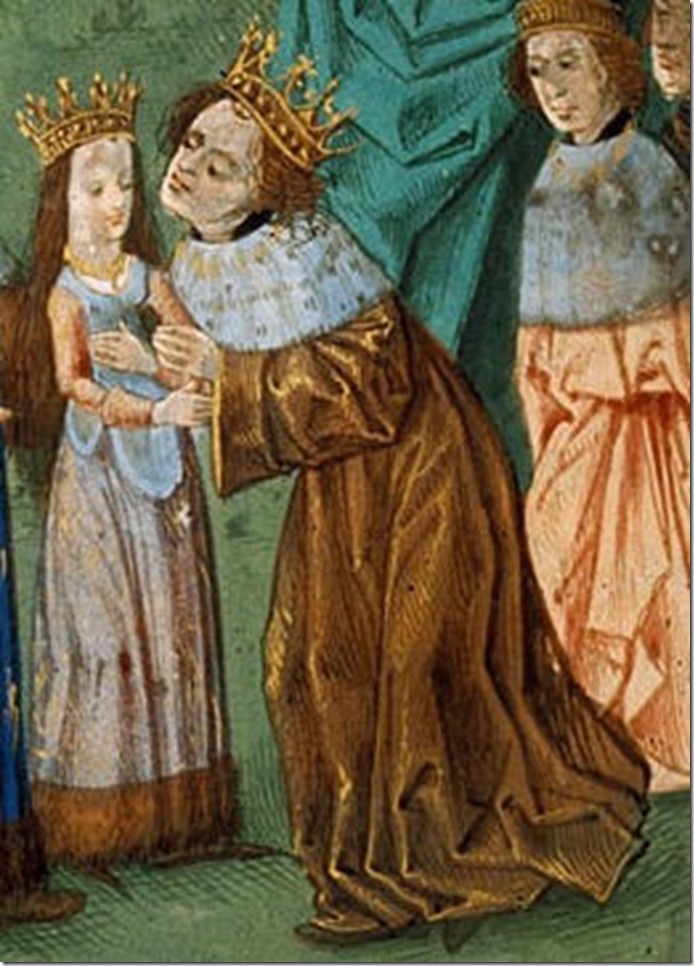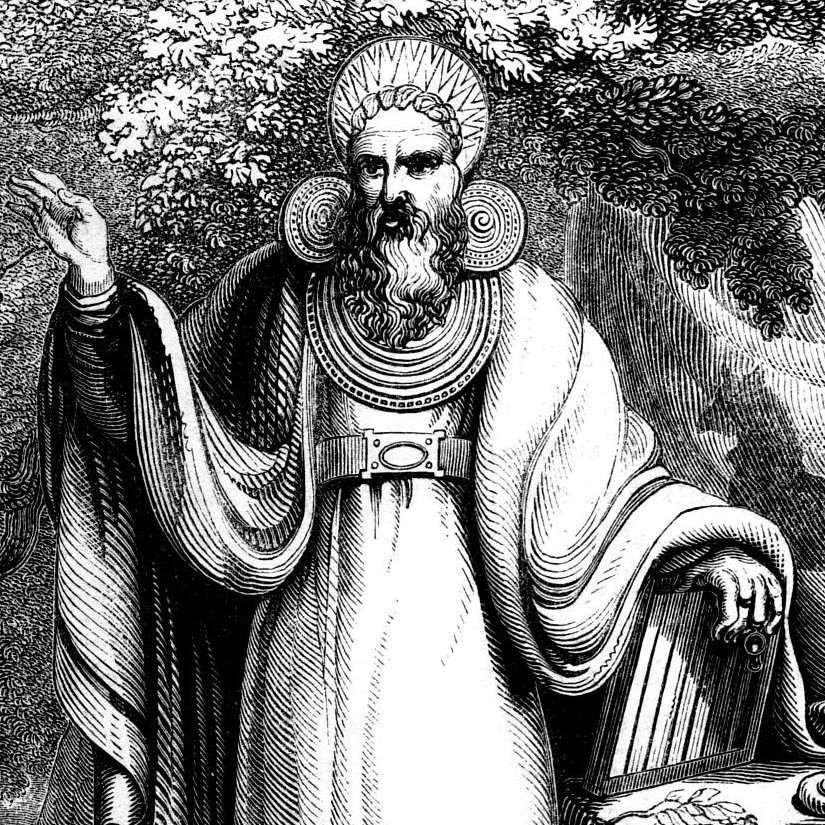There is overwhelming evidence that Aisha bint Abu Bakr was married to Muhammad at the age of six and the marriage consummated at the age of nine–possibly as young as eight.
This is a fact that is utterly inescapable. So is the Islamic doctrine that Muhammad was the “best pattern of behavior.” Everything that Muhammad has done, other than some small mistakes that he might have made here or there, soon corrected, must be a right and noble thing–not just defensible in the culture of the time but as an example for all future generations. If you do not believe that, you are an Islamic heretic or hypocrite at the very best.
Muslims must say, therefore, that Muhammad was right to have sex with a little girl of nine years old. They’ve come up with absurd excuses for this behavior–that girls in general and Aisha in particular “matured faster” back then, for instance, or Aisha was an especially wise and intelligent child–but the ahadith make it crystal clear the Aisha was prepubescent at the time that Muhammad began having regular intercourse with her. She was allowed to play with dolls, contrary to Muhammad’s prohibition against images, because she was pre-pubescent. She was so young that she was hopelessly incompetent with the tasks that women were expected to be capable of upon setting up a house–cooking, kneading the dough, and activities of that sort. Goats used to come in and eat her day’s bread because, at nine, she didn’t keep a close eye on it but spent much of her time, as nine-year-olds do, playing with her friends. There is no evidence of her maturity. She broke pots of food out of jealousy, she threw fits, and she said mean and childish things.
Therefore, if you do not hold that a man of fifty should marry a prepubescent little girl of nine and have intercourse with her every day, you are not an orthodox Muslim. If you, as a parent, would hold back your daughter from a husband on the basis of her age, or if you, as a little girl who plays on swings and with dolls, say that you are too young for a man nearly six times your age to thrust his penis into you nightly, then you are a bad Muslim.
This is one of the many reasons that the worst Muslims are actually the best out of all Muslims.
Unable to defend the point that Muhammad did not, in fact, have sex with a tiny little girl, some Muslims try to pretend that prepubescent child marriage and consummation was perfectly normal in Western culture at some point in the past, and that it is just a delusion or corruption of Western culture that makes us find such a thing revolting now. Muslims go so far as to deface Wikipedia pages regularly with false information about the age of consent to make it seem like Muhammad would not have been considered a child rapist in the West, even in ancient times.
They would be wrong.
The ancient age of consent in the West was twelve (and post-pubescent) for girls and fourteen (and post-pubescent) for boys. A marriage had two necessary steps: the exchange of vows and the consummation. A prepubescent girl was not considered to be any more fit for consummation than a prepubescent boy.
Even thought these were the legal minimums, most people who married were quite a bit older even by the early Roman Empire, when marriage reforms and a greater amount of women’s rights had progressed to the point that most girls were married in their late teens to early twenties. During the same period, the age of men’s marriage dropped, from about 30 on average to about 25. In the Middle Ages, peasants tended to marry later than people with a more secure future–brides were usually 22 to 26 and groom 24 to 28. In the American colonies, with greater economic opportunity, the average marriage age dropped to 18 to 22 for women and 20 to 25 for men, which then raised steadily after the beginning of the 20th century. These marriage patterns were typical of those who chose their spouses themselves, for both security and for love.
Some deeply corrupt Muslim “scholars” like to distort old American laws related to rape, misrepresenting the ages under which an sexual contact is considered the most egregious kind of aggravated sexual assault as if they were the age of consent for marriage, instead.
There were different kinds of laws regulating or condemning sexual contact with different groups of people. When the victim was considered so obviously young that no man could conceivably think that he was seducing a girl above the age of consent, the action was considered to be aggravated sexual assault even if there was no violence involved whatsoever. Some states felt like the age should be set lower than the age of consent, in the case of a girl who might look older than she was, setting the age at ten, or in the sole case of Delaware, at seven.
This did not mean that men who had sex with girls seven or older got away with it in Delaware, however. It meant that between the ages of seven and twelve, the sex might in some cases be held to be statutory rape rather than automatically being aggravated sexual assault. In the old American law codes, aggravated sexual assault was often punishable by death. Statutory rape was not. The Delaware lawmakers felt like that if someone is going to be hanged for having sex with a girl, there needs to be no question in the perpetrator’s mind that he is committing a heinous and illegal act. Of course, plenty of states couldn’t care less about the offender making a mistake of a few years–they were happy to hang every man who had sex with a nine- or eleven-year-old, no matter how old they looked.
That’s right–the actual law codes that Muslim “scholars” will cite as supporting child marriage actually meant that in most states, Muhammad could have been sentenced to death for having sex with Aisha at nine.
Some people still like to make a big deal about not having a minimum age of marriage set in many US states, either historically or, in a few states, currently. That’s not actually true, however. American law is based on English common law, and so common law prevails where no contravening law is passed.
Every state has long allowed people eighteen or over to marry without their parents’ permission–that’s actually based on Scottish rather than English law, which set the threshold at twenty-one. However, where marriages under eighteen are allowed, the parents’ permission is required and the marriage must also, at the very least, conform to common law minimums–that is, age twelve for girls. These laws are based Western culture, working on the premise that the children would be initiating the marriages but that parents are going to use their parental veto power to block any marriages that should not be taking place. And except for a few isolated communities, this is generally exactly how it happened historically. There are incredibly few girls who want to get married at twelve and even fewer Western parents who would allow it in any circumstances–either now or a hundred years ago. Over the years, the marriage minimums in most states were raised, but the actions hardly received any attention because even in the rare states that haven’t updated the laws since the 1700s, marriages of Western girls age fifteen or under are very rare.
Child marriage activist Fraidy Reiss, who comes from a Hasidic Jewish background and felt forced into marriage at nineteen, has made some sensational claims about the prevalence of child marriage in America, but independent research has found that most of these claims are wildly exaggerated and sometimes blatantly false. However, she is right that social norms alone, no matter how entrenched over hundreds of years, are not sufficient to protect every single girl (because really terrible parents do exist) or even most girls against the traditions of alien cultures where forced child marriage is the norm. With the current level of Islamic immigration into America, forced child marriage, both at home and abroad, has become a problem that it never had been before, and to control these antisocial tendencies, we must revise our laws to enforce our cultural standards of decency, since the exceptional circumstance of the West is the everyday norm in some countries.
Going back against to historical times, there was one group who did not follow the normal marriage patterns in the West, and that was the elites. The elites from ancient times until the early modern period rarely chose their own spouses, and even when they did, it was more because of the political and economic advantages of the match than for love. Therefore, marriages were contracted even between people who had never meet, and choice was less relevant (though consent was, at least theoretically, still required). Starting in the Middle Ages, matches would be made sometimes when children were in the cradle, and marriages by proxy were conducted to seal the deal as soon as possible between spouses who had never seen each other.
Many kings and future kings married girls who were quite young. But most of these marriages were consummated when the girls were between the ages of sixteen and nineteen. Some were never consummated at all. I conducted a survey of all marriages involving future and reigning English kings and queen consorts and between future and reigning queen regents and their consorts or kings, between 1066 and 1910, and I recorded the age at first marriage of the women in each of these unions. The bride was under twelve once, between twelve and fifteen 17 times, between sixteen and nineteen 14 times, between twenty and twenty-one 13 times, and over thirty once. As anything under sixteen could be realistically considered a child marriage by the standards of most of human history, that would put 18 out of 46 first marriages into this category.
But how many were consummated before or even at the age of twelve?
None.
The one marriage that occurred between a king and a girl under twelve has exactly the opposite significance than the depraved Muslim “scholars” who promote this story like to give it.
Richard II married Anne of Bohemia when he was fifteen and she was sixteen. They were desperately in love, and even though their marriage was childless, when she died twelve years later, he did not want to remarry. Richard’s barons were in terror of a civil war if he died without heirs, however, and they demanded that he marry again. So he chose a French princess, which the nobles were unable to criticize–even though she was only six at the time–because their marriage was made part of an important peace treaty. He did this quite deliberately, because he knew that he could easily delay being required to consummate the marriage for a solid ten years and remain faithful to the memory of his dead wife. The English delegation was sure that either the French king or the little girl would refuse, but to their shock, they both accepted, and they were force to stand by as the tiny Isabella of Valois married the king, delaying any hope for an heir by a decade. She was installed in her own castle with a governess and ladies to attend her, and the king would come and visit her sometimes and play children’s games. The marriage was still unconsummated when he died four years later after a coup d’état.
This is not the story of a lecherous man wanting to despoil a tiny child but rather the story of a king outmaneuvering his court so that he was not forced to betray the memory of the woman he had loved. It is literally the opposite of the despicable story that the Muslim apologists like to make it out to be.
How many of these royal marriages were consummated before the age of sixteen?
Four definitely were, two at fourteen and two at fifteen. Mary of Bohun was twelve at marriage and her husband, the future Henry IV of England, was thirteen. Against his father’s wishes, they secretly consummated the marriage when she was fourteen, which resulted in a child who died soon after birth. They were then kept more separate by Henry’s furious father, and her next birth was not until she was eighteen.
Eleanor of Castile was thirteen when she married the future Edward I of England, who was fifteen. She fell pregnant when she was fourteen and had a stillbirth—another case of young lust overriding sense, as they were famously in love. That scare was enough to cause the couple to stop having intercourse for some time, as her next child was not born until she was twenty, after which she had 13 further children.
No husband in this group who was more than two years older than his wife consummated a marriage before the age of fifteen, probably because he had enough sense not to put her life in danger.
Philippa of Hainault married the future Edward III when she was thirteen and he was fifteen. She had her first child at sixteen, and they most likely consummated their marriage when she was fifteen.
Finally, the future Mary II wed the future William III when she was fifteen and a half and he was twenty-two. They immediately consummated their marriage, and she soon had a miscarriage, and perhaps several more over the following years.
There are three more marriages that took place before the girl was sixteen in which the date of consummation cannot be known with any reliability because of the women’s lack of children with that husband. In addition, there were also two child marriages (including that of Isabella of Valois) that remained unconsummated. One of the other three marriages that are questioned may have been unconsummated, too.
In the remaining nine child marriages, we have positive evidence of consummation being delayed until the woman was sixteen to eighteen—or occasionally even later, typically when the couple really did not like each other.
It’s also important to point out that many of these men who abstained from having sex with their wives before they were sixteen were not thoughtful, generous, kind men, even by the standards of the day. Most were princes. All were nobility. They were used to getting what they wanted. Most had mistresses, and some even tried to force their wives to give those mistresses honors. They were not restraining themselves out of some chivalrous urge but because to do otherwise could only be considered the most beastly and heinous behavior.
It should be noted that, as far as ages were known, not even one of their mistresses were less than sixteen, either, over this near-thousand year span. (Only one of the most famously dissipated of the French kings would be known to have such young mistresses.)
So, how unacceptable was early sex? Edward I was so desperate for another son after his first wife died that he went to war with the King of France when the latter tried to get him to marry an eleven-year-old princess instead of her fifteen-year-old sister, because the eleven-year-old was unacceptably young.
There is one case of a future king being born to a very young girl. Margaret Beaufort was married at twelve to 24-year-old Edmund Tudor. This happened during the Wars of the Roses, a major English civil war, and Margaret’s descent meant that any child that she had would have a very strong claim to the throne. Political calculations, then, outweighed any consideration for her wellbeing. Margaret gave birth age 13 years and 8 months, her labor so difficult that she nearly died, and this event is blamed for the fact that she would never carry another pregnancy for the rest of her life. She did, however, succeed in producing the child whose various claims allowed him to become Henry VII.
In Romeo and Juliet, the audience is supposed to be as uncomfortable with Juliet being pushed into marriage at 13 as we would now at a girl marrying at 16. In fact, the original source from which Shakespeare got his plot placed her at 16, which was more like a marriage at 18 to a 21st century audience, but to make her parents more complicit in the tragedy, Shakespeare deliberately put her at an age that would make the audience go, “Well, of course that ended badly! Serves her parents right!”
In the Western world, unlike in Arab and even Jewish culture, there was a lot less emphasis on the importance of immediately producing a son for the financial and even physical safety of a woman. Among the Western peasantry, the widow would inherit the man’s entire estate if he had no children, and there was a greater fear of having too many children to leave a good inheritance for than having too few children. For that reason, there was no child marriage at all among the peasantry. In fact, peasant girls typically married in their twenties rather than their teens. A couple would wait until they had enough money or an inheritance before marrying and starting a family–a husband is a house-band; no house, no wife. And if there were no children, there was always some nephew or niece and spouse who would happily become heirs in return for working a peasant’s land.
Noble widows inherited a much smaller share, yet no matter what, a noblewoman would still have a financially comfortable future. As for the noblemen, they wanted healthy wives and children—neither too many nor too few—and they knew that this was best achieved if a woman was old enough that she was fully developed, which was most often between the ages of 16 to 18. If a man’s young bride had a child too young and crippled her body, she might be unable to have more, and then he could end up with no children at all—as well as the contempt of his peers, which was suggested in Romeo and Juliet, too.
The aim of a young noble marriage was almost never young sex. It was a familial alliance or a land exchange, or both. Many times, the couple in an arranged marriage that took place when they were young would not even meet face-to-face until years later. The aim of these early marriages was to prevent any other marriage alliance from being formed instead, even though any land transfers were not completely solidified until a consummation of the marriage. In addition, the role of a nobleman’s wife, never mind that of a king, was complicated and required adult intellect and skills. As soon as a girl moved from merely wedded to both wedded and bedded, she would be expected to take on the full role of an adult noblewoman, and so she would have to be mature enough, physically and intellectually, to do so.
Before then, a married girl might live with her parents, in a convent, or with her husband’s family but separate from him, frequently on a different estate, as it was often considered the better course of action, if both of the spouses were young, to keep them apart so they did not have sex before their wiser and older guardians considered it prudent for the health of the bride.
Even when a pretense of cohabitation was made after the age at which the husband’s parents desired the couple to consummate a marriage, it was fairly common that actual consummation would be delayed for a year or longer. Often times, the couple did not know each other very well, or they might not like each other. Both frequently delayed consummation.
One of the most famous cases of delayed consummation of an arranged marriage was that of Marie Antoinette and Louis XVI of France. Though they were married when she was fifteen and he was sixteen, they did not consummate their marriage until she was twenty-two and he was twenty-three. Louis XVI was low in intelligence and seemed to lack any sexual interest at all, and Marie Antoinette was uninterested in him and not very moved by her duties as queen.
Eleanor of Aquitaine was married to Louis VII of France in an arranged marriage when she was fifteen, but they did not have their first child until she was twenty-three. It was reported even at the time that they rarely shared the same bed, and it seems that their consummation was similarly delayed.
The security of any marriage conducted before the age of consent questionable, though, because if either spouse disavowed their marriage after puberty and before consummation, this could be grounds for an annulment. In fact, annulment could be (and was) obtained even in the case of children if the couple were forced to live together by relatives against their will. The dangers of providing grounds for an annulment quickly led to the disappearance of marriages conducted before the age of consent, though of course arranged marriages were still very common among the nobility until the 19th century and among the royalty until the 20th.
So why was the age of consent set at twelve if marriages were conducted so rarely then? Quite simply, because the church and society at large did not want to deny legitimacy to any child who could possibly have claim to it. While the position of widows was generally secure in the West, given that people didn’t marry until they had a secure inheritance or property to live on, the position of a single woman who had a child and no immediate claim on either property or a husband’s labor was extremely insecure. A child needed a father or an inheritance as support, and a girl who was seduced and impregnated at twelve at least had the legal recourse to claim that her seducer had exchanged secret vows of marriage with her, because that was the age of consent.
There was also the matter of the difference between what a society disliked and what it ruled to be utterly impermissible. Western society intensely disliked marriages between young women and old men, but society didn’t make it illegal. Similarly, marriages of girls under sixteen to anyone were seen with distaste, but they were legally permitted. However, there are no small number of cases where girls of twelve and thirteen were actually kidnapped by local lords or clergymen when these people felt that the girl was being either forced or brainwashed into marrying too young by her guardian or her family–these were well-documented cases of alarmed neighbors going to the local authorities for help when they saw something happening that they viewed as morally wrong even if legally passable. When challenged in court, most of these distasteful marriages were, in fact, dissolved.
There was nothing to be done with a woman of twenty married a man of sixty, though, except to write rude songs about him.






